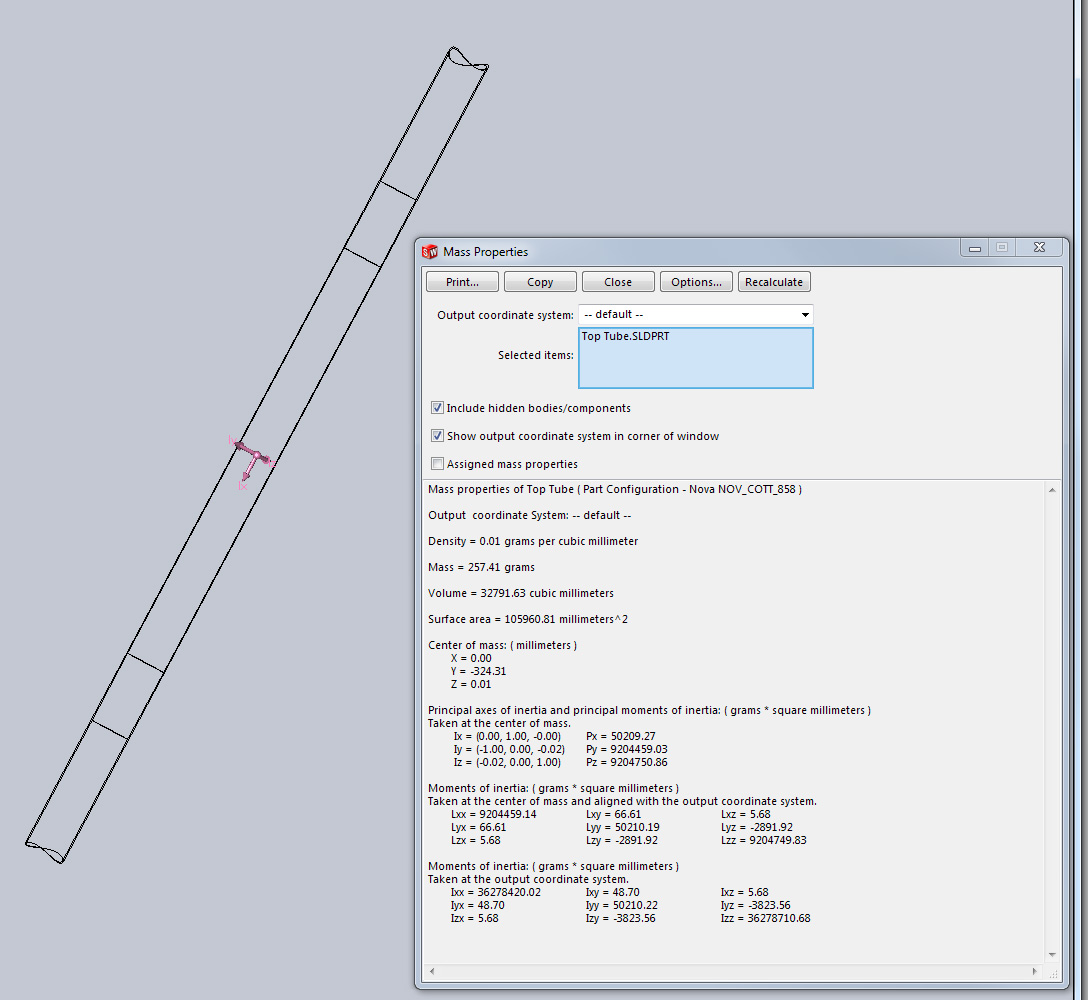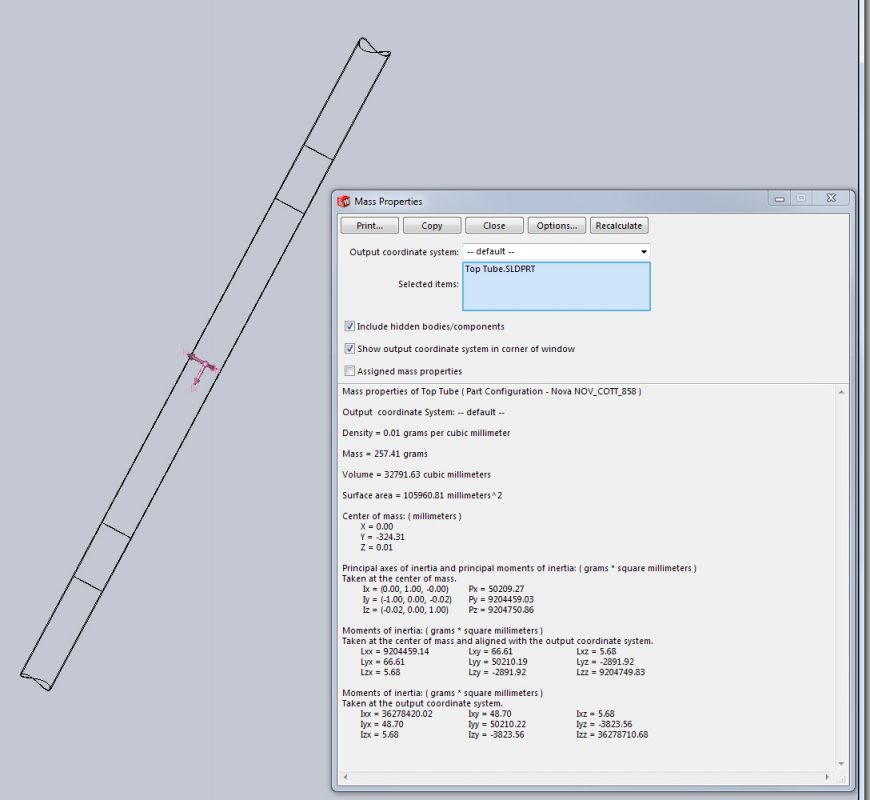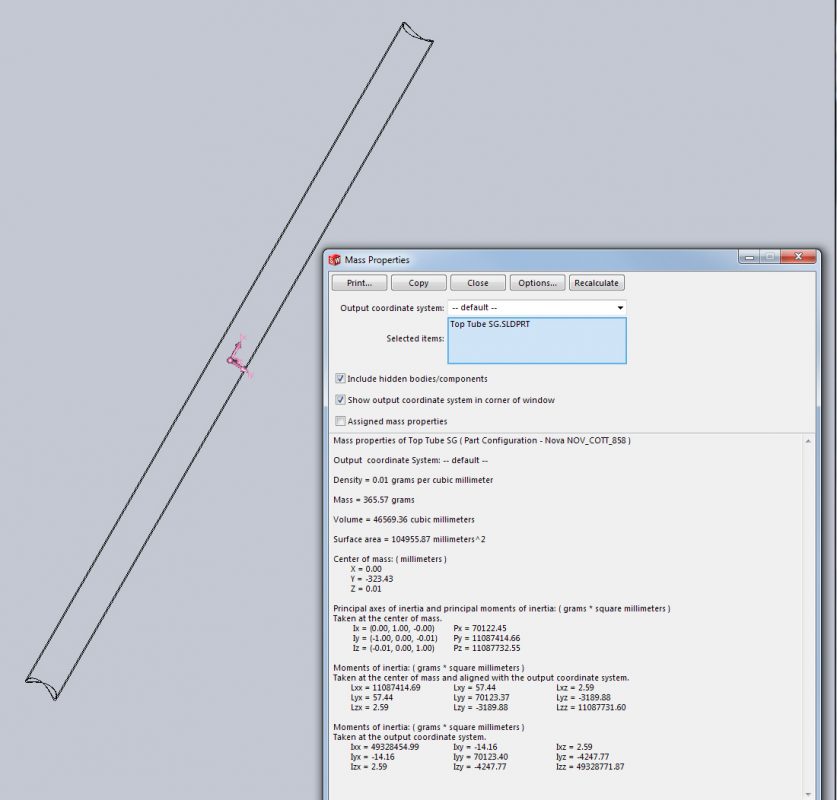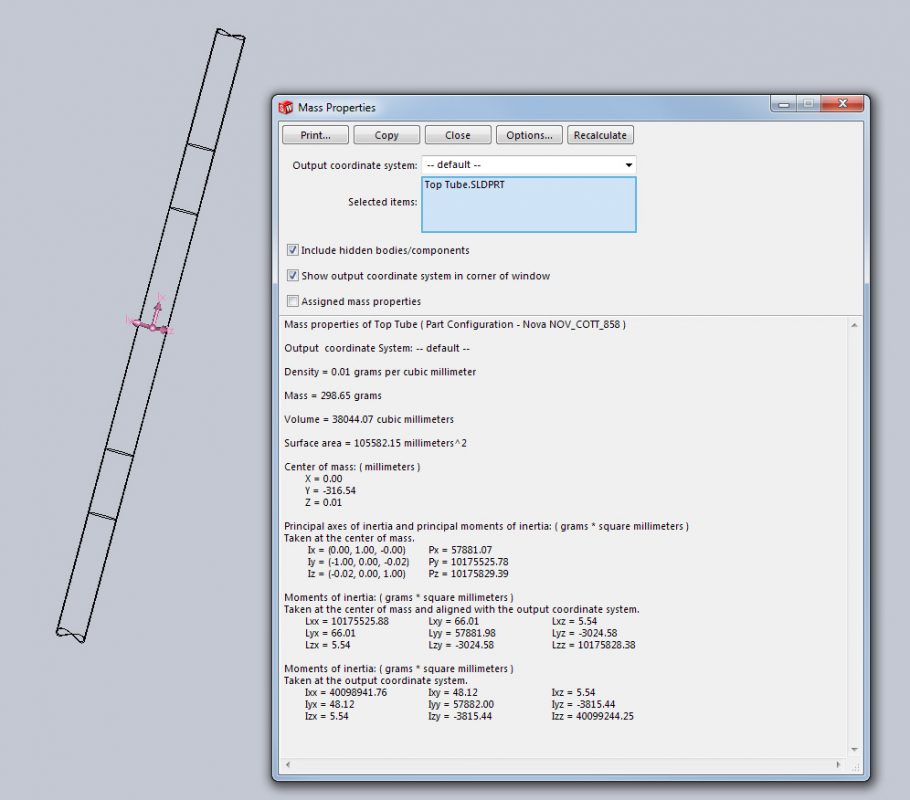Every now and then, someone comes up with the great idea to build a bike frame with straight gauge tubes. This is silly and a dumb idea.
Here, I compare with a True Temper VER01 .8/0.5/0.8 butted tube with a section of straight gauge 0.035″ thick 1.125″ diameter 4130. Why compare a 8/5/8 tube with an 0.035 tube? Simply, comparing with a 9/6/9 (0.9mm=0.035″) tube isn’t fair as we tend not to use tubes that thick on custom builds. I suggest 9/6/9 for people to build with on their first builds just to make welding a little easier for the inexperienced. After that, 8/5/8 is most commonly used. Why straight gauge 0.035″ 4130? Because that is as thin as that material is available commercially in many of the sizes used on a bike. Real world stuff.
I use the tube as it is cut as a top tube on my upcoming bike frame. It’s about 609mm OAL when mitered.
The butted tube weighs 257 grams and the straight gauge tube weighs 366 grams. That’s a 109 gram difference just in the top tube. Other tubes will see even greater differences.
Then we talk cost. The butted tube from Henry James is $14.50 while 609mm of 4130 tube from McMaster is $13.40 when cut from a 6 ft. section. You save just one dollar. That’s a poor decision especially as the bicycle tube may be of a superior alloy.
A True Temper 9./6/9 RC2DT tube is also just $10.00 so it’s still far cheaper than straight gauge and 67 grams lighter than straight gauge at 299 grams.




